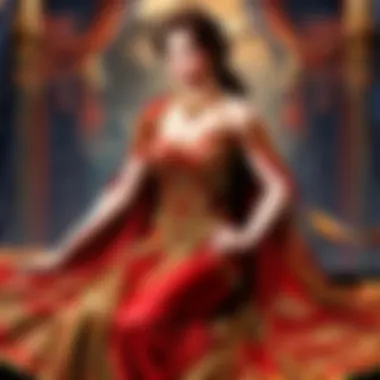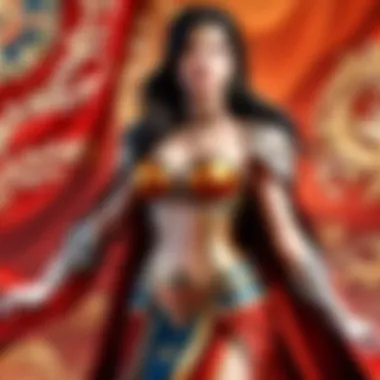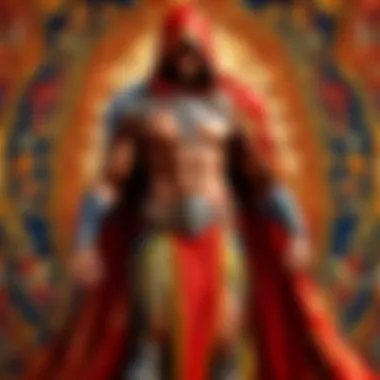Unveiling the Exquisite Craftsmanship of a Bolt of Silk Fabric: A Comprehensive Exploration


Silk, a luxurious and sought-after fabric, has a rich history and continues to captivate with its intricate composition and diverse applications. This article delves into the essence of a bolt of silk fabric, unravelling its origin, production process, cultural significance, and modern-day uses.
The Origins of Silk
Silk, often hailed as the 'Queen of Textiles,' traces its beginnings to ancient China, a civilization that closely guarded the secret of silk production. The delicate threads spun from silkworm cocoons were a symbol of wealth and prestige, coveted by emperors and nobility.
Explorers and traders carried silk along the legendary Silk Road, spreading its allure across continents and cultures. The meticulous craftsmanship involved in silk production highlighted the craftsmanship and dedication of artisans, making each bolt of silk a masterpiece of tradition and innovation.
Composition and Production
A bolt of silk fabric consists of fine threads woven together to form a smooth, lustrous surface that exudes elegance and sophistication. The production process begins with cultivating silkworms to obtain silk fibers, which are then carefully spun into yarns.
Skilled weavers intricately interlace these yarns on looms, applying precise techniques to create enchanting patterns and textures. Dyeing and finishing techniques enhance the beauty of silk, unveiling a spectrum of colors and sheens that enchant the beholder.
Cultural Significance
Silk transcends mere fabric; it is a cultural emblem embodying tradition, artistry, and heritage. From ornate kimono robes in Japan to opulent sarees in India, silk garments symbolize prestige and beauty.
Throughout history, silk has been intertwined with rituals, ceremonies, and festivities, signifying prosperity and fortune. The delicate nature of silk not only appeals to the senses but also signifies grace and sophistication, making it a timeless symbol of refinement.
Contemporary Applications
In the modern era, silk finds its place in haute couture, interior decor, and innovative technologies. Fashion designers elevate silk to new heights, incorporating it into exquisite gowns and tailored suits that showcase its drape and luminosity.
Additionally, silk's hypoallergenic and moisture-wicking properties make it a favored choice for bedding and luxury linens, offering unparalleled comfort and elegance. The integration of silk fibers in advanced medical dressings and aerospace materials exemplifies the versatility and durability of this extraordinary textile.
Synthesis and Conclusion
The journey through the intricacies of a bolt of silk fabric reveals a tapestry of craftsmanship, culture, and creativity. From its mythical origins to modern-day applications, silk continues to enthrall and inspire with its timeless allure and unwavering elegance.
Embrace the world of silk, where every thread holds a story, every pattern carries a legacy, and every bolt embodies the artistry of centuries past and present.
Introduction
Silk fabric, with its rich history and luxurious appeal, stands as a testament to human artistry and ingenuity. This article peels back the layers of a bolt of silk fabric, unraveling its intricacies from the origins of silk to its contemporary applications. Delving into the composition, production processes, historical significance, and cultural impact of silk, this comprehensive guide aims to provide a nuanced perspective for enthusiasts of exquisite textiles.
Defining Silk Fabric


Silk fabric, known for its unparalleled elegance and opulence, has captured the fascination of civilizations for centuries. As a luxurious textile, silk embodies sophistication and refinement, elevating garments and textiles to a realm of unparalleled quality. The innate softness, shimmering luster, and delicate drape of silk set it apart as a fabric reserved for connoisseurs seeking the epitome of luxury. Its lightweight nature and breathability further enhance its appeal, making it a coveted choice for high-end fashion designers and discerning individuals alike.
Silk as a Luxurious Textile
At the core of silk's allure lies its status as a luxurious textile par excellence. The exceptional properties of silk, including its smooth feel against the skin, natural sheen that catches the light with unparalleled grace, and excellent draping capabilities, make it a favorite among couturiers and fashion houses. Silk as a luxurious textile surpasses mere fabric; it embodies a lifestyle of sophistication and refinement, synonymous with elegance and prestige. The timeless appeal of silk as a luxurious textile stems from its ability to exude a sense of extravagance and exclusivity, characteristics highly prized in the world of fashion and beyond.
Historical Origins
Silk fabric's historical origins play a crucial role in understanding the richness of this textile. The journey of silk dates back to ancient times, with its production being a closely guarded secret in regions like China. The historical significance of silk goes beyond mere fabric production; it symbolizes power, luxury, and cultural sophistication. The advent of silk marked a significant turning point in global trade and cultural exchange, influencing societies far beyond its countries of origin.
Ancient Silk Production
Delving into the intricacies of ancient silk production unveils a fascinating narrative of innovation and craftsmanship. The meticulous process of extracting silk from silkworm cocoons was a highly esteemed art form in ancient China. Silk production not only provided luxurious fabric but also served as a symbol of status and refinement. The labor-intensive techniques involved in ancient silk production showcase the dedication and mastery of early artisans in preserving this valuable tradition.
Silk in Ancient China
The prominence of silk in ancient China revolutionized the textile industry and set new standards for quality and sophistication. Silk fabric from China was renowned for its unparalleled softness, sheen, and durability. This exceptional textile's popularity transcended borders, becoming a cherished commodity in trade routes like the Silk Road. The intricate weaving techniques employed by ancient Chinese weavers produced fabrics with intricate designs and unmatched elegance. The exclusivity of silk in ancient China epitomized luxury and opulence, shaping the fabric's enduring allure through the ages.
Silk Road Influence
The Silk Road played a pivotal role in shaping silk production and trade on a global scale. The intercontinental trade of silk facilitated cultural exchange and sparked economic growth in regions connected by this ancient route. Silk became a coveted commodity among merchants, travelers, and royalty, emphasizing its value as a symbol of prestige and wealth. The Silk Road's influence on silk trade not only boosted economies but also fostered cross-cultural interactions, leading to the exchange of ideas, technologies, and traditions. Despite the challenges of transcontinental trade, the allure of silk as a valuable and versatile fabric persisted, leaving a lasting impact on the development of civilizations along the Silk Road.
Silk Fabric Composition
Silk fabric composition forms the essence of this article, delving deep into the intricate makeup of this luxurious textile. Understanding the complexities of silk's composition is integral to appreciating its unique characteristics. From the molecular structure to the weave pattern, every element contributes to the final product's quality and feel. The significance of silk fabric composition lies in its ability to exude elegance and sophistication, setting it apart from other fabrics. Delving into the thread count, yarn quality, and dyeing techniques reveals the attention to detail required in creating a premium silk fabric. The composition not only influences the fabric's texture but also its durability and sheen, making it a preferred choice for high-end garments and luxury items.
Silkworm Cocoon Transformation
Sericulture Process
The sericulture process plays a pivotal role in transforming silkworm cocoons into exquisite silk fabric. This intricate method involves nurturing silkworms from larvae to cocoon-spinning adults. The key characteristic of the sericulture process is its meticulous care and precision required at each stage. From feeding the silkworms mulberry leaves to carefully harvesting the cocoons, every step demands attention to detail to ensure the quality of the silk produced. The unique feature of sericulture lies in its sustainable approach, harnessing natural resources to cultivate this exquisite fabric. While labor-intensive, the sericulture process offers advantages in producing high-quality silk sought after for its softness, sheen, and durability. Its integration into this article highlights the fundamental role sericulture plays in the silk industry, showcasing the traditional craftsmanship behind each bolt of silk fabric.
Production Process
Silk production is a captivating process that intricately weaves together the past and the present, showcasing a balance between traditional practices and modern techniques. This section provides an in-depth exploration of the pivotal role played by the production process in the creation of silk fabric. By shedding light on the various stages involved, it illuminates the meticulous efforts and expertise required to transform raw silk into a luxurious textile. Understanding the production process is fundamental to appreciating the value and intricacies of silk fabric, from its humble beginnings as silkworm cocoons to the final exquisite material that graces runways and wardrobes worldwide.
Sericulture
From Silkworms to Silk Production


When delving into the realm of silk, the journey from silkworms to silk production becomes a paramount aspect to unravel. This subsection delves deep into the intricacies of sericulture, highlighting the transformation of delicate silk threads from tiny silkworms. Exploring the specific process of rearing silkworms, harvesting cocoons, and carefully extracting silk filaments, it underscores the painstaking efforts involved in harnessing nature's bounty for human use. The section articulates the unique characteristics of this process, emphasizing its unparalleled contribution to the creation of high-quality silk. Delving into the advantages and disadvantages, it unravels the importance of sericulture in preserving the essence of silk fabric and its significance in this detailed examination.
Weaving and Finishing
Traditional Techniques vs. Modern Methods
In the tapestry of silk production, the interplay between traditional weaving techniques and modern finishing methods plays a crucial role in shaping the final textile. By dissecting the dichotomy between age-old practices and contemporary innovations, this subsection reveals the nuances and complexities of weaving and finishing silk fabric. It underscores the key characteristics of both approaches, underlining the reasons behind their prevalence in the industry. By exploring the unique features of traditional techniques and modern methods, it provides valuable insights into the benefits and drawbacks of each in the context of silk production. This comparison offers a comprehensive view of how weaving and finishing techniques have evolved over time, enriching the fabric of silk with a blend of heritage and advancement.
Types of Silk Fabric
Silk fabric comes in various types, each offering unique characteristics and benefits that cater to different preferences and needs. In this detailed exploration of silk fabric types, we aim to uncover the significance and diverse applications of these variants. Understanding the distinctions between silk fabric types is crucial in appreciating the intricacies of this luxurious textile.
Mulberry Silk
Mulberry silk, often referred to as 'The Queen of Silks,' holds a paramount position in the realm of silk fabrics. Its exceptional quality and fine texture make it a highly coveted choice in the textile industry. The key characteristic that sets Mulberry silk apart is its unparalleled softness and natural sheen, giving it a luxurious feel that surpasses other silk varieties. This aspect elevates Mulberry silk to a beneficial choice for various applications within this article, emphasizing its superiority in terms of comfort and elegance.
The Queen of Silks
Mulberry silk's title as 'The Queen of Silks' is justified by its unmatched quality and smooth feel, making it a preferred option for luxury garments and upscale products. The unique feature of Mulberry silk lies in its production process, which utilizes silk harvested from Mulberry silkworms, known for producing finer and more uniform silk threads. This meticulous technique results in a fabric of supreme delicacy and strength, accentuating its advantages of durability and aesthetic appeal within the context of this article.
Characteristics of Silk
Silk, a fabric renowned for its elegance and luxury, plays a pivotal role in the textile industry. In this article, delving into the characteristics of silk is paramount as it sheds light on the unique properties that set this fabric apart. Understanding the specific elements and benefits of silk's characteristics is crucial to appreciating its timeless allure and practicality. From its softness and luster to its durability and strength, silk's composition intricacies are essential to unraveling the mystique of this coveted textile.
Luxurious Texture
When exploring silk's luxurious texture, one cannot overlook the exquisite combination of softness and luster that defines this fabric. Softness and luster, key aspects of silk's appeal, work synergistically to create a tactile experience like no other. The inherent smoothness and sheen of silk fabric elevate its status in the fashion world, making it a preferred choice for high-end garments and luxurious drapery. The unique feature of softness and luster lies in their ability to enhance the visual and tactile properties of silk, ensuring a sensory delight for those who appreciate finesse and sophistication.
Softness and Luster
Softness and luster, synonymous with silk, embody the essence of luxury and refinement. The silk fabric's unparalleled softness caresses the skin delicately, providing a sensation of comfort and opulence. Coupled with its captivating luster, which reflects light with a gentle gleam, silk exudes an aura of sophistication and elegance. The marriage of softness and luster not only elevates the aesthetic appeal of silk but also enhances its tactile allure, making it a popular choice in haute couture and fine furnishings. While the advantages of softness and luster in silk are abundant, one may argue its main drawback is the delicate nature that requires careful maintenance to prolong its beauty and integrity.
Durability and Strength
Contrary to its delicate appearance, silk boasts remarkable durability and strength, making it a fabric of resilience in the textile realm. The fabric of resilience, silk exemplifies endurance and robustness through its unique structural composition. The key characteristic of silk's durability and strength lies in its ability to withstand tension and wear, ensuring longevity and sustainability in various applications. A versatile choice for both fashion and interior design, silk's fabric of resilience provides a sturdy yet luxurious foundation for timeless creations.
A Fabric of Resilience
A fabric of resilience, silk's durability and strength stem from its natural properties, such as protein fiber composition and elongation at break. These factors contribute to silk's ability to endure various stressors and maintain its structural integrity over time. The distinct advantage of silk's fabric of resilience is its ability to retain its shape and quality even after multiple uses, highlighting its superior quality and long-lasting nature. While there are clear benefits to silk's durability and strength, its main disadvantage may lie in its susceptibility to damage from moisture or high temperatures, requiring careful handling and storage to preserve its robustness.


Cultural Significance
In delving into the multifaceted world of silk fabric, understanding its cultural significance provides a window into the historical context and societal impact of this luxurious textile. Silk holds a reverential position in various cultures worldwide, symbolizing sophistication, elegance, and opulence. Its significance extends beyond being just a fabric; it embodies tradition, craftsmanship, and centuries-old rituals that have transcended time and geographical boundaries.
Silk's presence in ancient rituals unveils a deeper connection to spirituality and symbolism, enriching ceremonies and cultural practices. The intricate weaving of silk threads mirrors the weaving of tales and traditions passed down through generations, showcasing a tangible link to heritage and belief systems. This fabric's symbolic resonance in rituals underscores its role as a bearer of blessings, prosperity, and auspiciousness in diverse cultural rites.
Silk in Ancient Rituals: Symbolism and Tradition
Exploring the realm of symbolism and tradition within silk's presence in ancient rituals unravels a tapestry of meanings and rituals embedded in its threads. Symbolism and tradition encapsulate the essence of silk as more than a material possession; it embodies ideals, values, and cultural heritage. The choice of silk for ceremonial purposes signifies purity, royalty, and divine connection, elevating the significance of rituals to a sacred realm.
The key characteristic of symbolism and tradition lies in the transcendence of materiality, bridging the earthly and the divine in ceremonial settings. Silk's intrinsic qualities of softness, sheen, and strength elevate its symbolism, bestowing an aura of grace and majesty upon rituals. The unique feature of symbolism and tradition in silk lies in its ability to weave stories, myths, and belief systems into the very fabric of cultures, perpetuating legacies and narratives through tactile and visual mediums.
Fashion and Elegance
Within the realm of fashion, silk takes center stage as a symbol of sophistication, refinement, and exclusivity. Its utilization as a status symbol transcends trends and fads, enduring as a timeless representation of style and elegance. Silk's association with wealth, luxury, and prestige makes it a coveted choice for fashion connoisseurs who appreciate the artistry and craftsmanship behind this revered textile.
Silk as a Status Symbol
Delving into the significance of silk as a status symbol unravels layers of social hierarchy, taste, and cultural capital intertwined with fashion. Silk's status symbolism conveys more than just material wealth; it communicates social standing, refined taste, and an appreciation for luxury. The key characteristic of silk as a status symbol lies in its ability to command attention, evoke admiration, and symbolize exclusivity within sartorial landscapes.
Silk's unique feature as a status symbol rests in its timelessness and versatility, transcending cultural and geographic boundaries to epitomize elegance and refinement. While embodying unparalleled grace and allure, silk as a status symbol also faces challenges of accessibility and sustainability in a modern context. Yet, its enduring appeal and allure in the realm of fashion establish silk as an emblem of prestige and a testament to the enduring legacy of this exceptional textile.
Contemporary Applications
A critical aspect of delving into the intricacies of a bolt of silk fabric is understanding its contemporary applications. In the fast-paced world of today, silk continues to hold a significant position in various industries, with the fashion industry emerging as a primary domain for its utilization. The versatility of silk fabric makes it a sought-after material for creating luxurious designs that cater to different segments of the fashion market. Its smooth texture, natural sheen, and comfortable feel set it apart from other textiles, making it an ideal choice for high-end garments and accessories.
Fashion Industry
Within the expansive realm of contemporary applications, the fashion industry stands out as a prominent area showcasing the timeless allure of silk fabric. One specific avenue where silk shines brightly is in haute couture and designer labels. Haute couture refers to the creation of exclusive, custom-made clothing that embodies unparalleled craftsmanship and design. Designer labels, on the other hand, represent established brands known for their distinct style and innovative fashion creations. The use of silk in haute couture and designer labels enhances the exquisite nature of these pieces, elevating them to couture status. Its ability to drape elegantly, reflect light beautifully, and enhance the overall visual appeal of the garment makes silk a favored option in creating stunning couture pieces.
Environmental Impact
Silk production, renowned for centuries for its exquisite qualities, unveils a layer of challenges when it comes to environmental impact. Delving beyond the realms of aesthetics and prestige, the textile industry's environmental footprint has drawn increased attention in recent years. The intricate process of silk production entails significant water consumption, energy usage, and chemical inputs. The cultivation of mulberry trees for silkworms places demands on agricultural resources, while the extraction of silk strands and subsequent weaving involve complex machinery that often relies on fossil fuels. Additionally, the dyeing and finishing stages of silk fabric can release harmful pollutants into water sources, impacting ecosystems.
Sustainability Challenges
Efforts Towards Ethical Silk Production
One key aspect within the realm of sustainability challenges in silk production is the ongoing endeavor towards ethical silk production. This initiative aims to address the environmental and ethical concerns associated with traditional silk manufacturing practices. Efforts towards ethical silk production prioritize sustainable sericulture methods, emphasizing reduced environmental impact and ethical treatment of silkworms. By promoting transparency in the supply chain and supporting fair labor practices, ethical silk production sets a new standard for a conscientious approach to silk manufacturing. The unique feature of ethical silk production lies in its commitment to biodiversity conservation, ecosystem preservation, and humane treatment of sericulture workers. While this approach may require additional investments and meticulous monitoring, its advantages in promoting sustainable practices and addressing consumer demand for ethically produced goods make it a compelling choice in the discourse surrounding silk fabric production.
Conclusion
Silk: A Timeless Marvel
Silk undoubtedly stands as a timeless marvel in modern society, with its legacy deeply interwoven in the historical tapestry of civilization. The Legacy of Silk in Modern Society encapsulates the essence of timeless elegance and sophistication that silk embodies. Its contribution to the fashion industry, art world, and cultural heritage is unmatched, showcasing an unparalleled blend of luxury and practicality. The key characteristic of this legacy lies in its ability to transcend trends and epochs, remaining a symbol of opulence and refinement throughout the ages. Silk's unique feature lies in its adaptability to contemporary applications while retaining its classic allure, making it a popular choice for designers and consumers alike. The advantages of silk's legacy lie in its durable, lustrous, and soft properties, which continue to enchant and inspire generations. With silk's legacy, we witness a harmonious blend of tradition and innovation, creating a fabric that exudes timelessness and sophistication, enriching the narrative of modern society.



